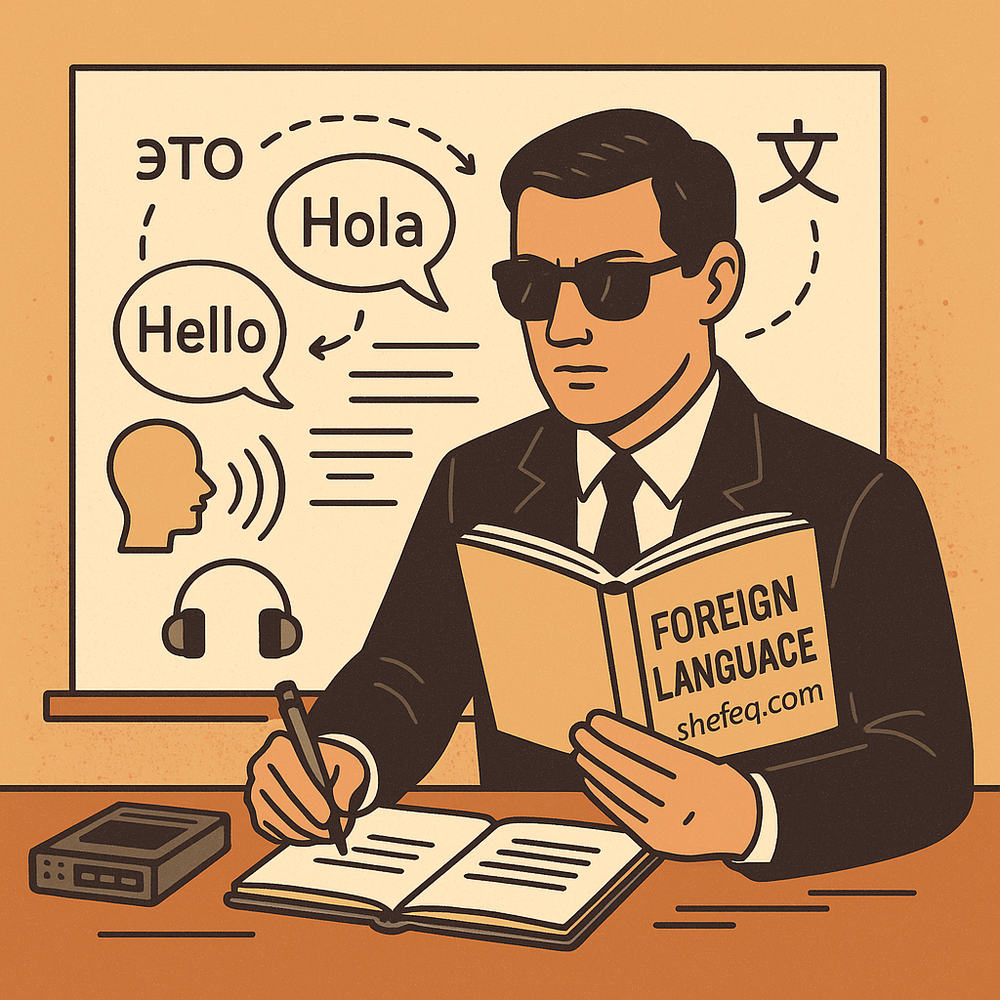Introduction
The world is witnessing a silent war.
There are no gunshots, no tanks rolling down streets.
This is a battle of information and psychological dominance.
Its heroes are the invisible ones – the spies.
They fight not only with weapons, but with words, language, and communication.
And one of their most powerful tools is the foreign language.
But the way spies learn a language is unlike any regular language course.
This article explores how, why, and with what techniques spies are trained in foreign languages.
1. Why Must a Spy Know a Foreign Language?
For a spy, knowing a language isn't just about speaking:
-
Reading sensitive documents,
-
Eavesdropping on conversations,
-
Pretending to be a citizen of another nation,
-
Infiltrating social and diplomatic circles.
A spy must speak not only the official language, but also:
-
Dialects,
-
Street slang,
-
Professional jargon.
Because real life doesn't always begin with “Hello,” but sometimes with “Yo, what's up?”
2. The Learning Process – As Secretive as Everything Else
a) Intensive Language Training
Spy language programs are nothing like casual language schools:
-
8–10 hours per day,
-
6 days a week,
-
Fluency within 3–6 months.
The goal: maximum results in minimum time.
b) Real-Life Simulations
Spies are trained in realistic scenarios:
-
Passport control interrogations,
-
Market negotiations,
-
Meetings with dangerous figures,
-
Simulated phone conversations.
All sessions are recorded, analyzed, and repeated until mastered.
3. How the Brain Learns the "Spy Language"
Spy language training is based on neuroscience and psychology:
a) Mnemonic Techniques
Each word is visualized. For example:
Window = a spy figure behind the glass.
b) Emotional Context
Words are memorized through emotional situations:
-
A question triggers suspicion and a spy-like reaction.
-
Thus, body response + vocabulary is learned together.
c) Multimodal Learning
Involves all senses:
-
Video,
-
Audio,
-
Movement (gestures),
-
Touch (kinesthetic memory).
The brain is taught to remember language through all five senses.
4. Not a Second Language – A Second Personality
A spy doesn’t just learn a language – they become someone else:
-
For Russia: vodka, humor, Orthodox culture.
-
For China: soft gestures, collectivist thinking, polite restraint.
This level of immersion is called intercultural transformation – the spy becomes a completely different persona.
5. Speaking Under Pressure – Telling a Lie Without Lying
Spies are trained to:
-
Speak confidently under interrogation,
-
Lie believably and invisibly,
-
Use misdirection techniques during speech.
Therefore, their language lessons include special interrogation simulations,
where the goal is not just to speak correctly — but to be trusted.
6. Who Teaches the Spies?
Their teachers are not ordinary instructors:
-
Former diplomats,
-
Lexicographers,
-
Psychologists,
-
Security officers.
They teach not just language but also its political, historical, and intelligence context.
7. The Language of Codes and Encryption
Spies also learn:
-
Cryptographic languages,
-
Coded messages,
-
Digital communication tools.
Sometimes a single emoji, color, or blink can convey an entire message.
8. Polyglot Spies – One Brain, Six Languages
Top-level spies:
-
Know 4–8 languages,
-
Switch accents and vocab styles easily,
-
Can impersonate citizens of three countries in one day.
At CIA and Mossad, some agents are known to speak native-level Arabic, Russian, Persian, French, English, Urdu.
9. Religious and Social Phrases – The Cultural Minefield
Spies are taught:
-
Religious expressions (e.g., who reacts how to “Inshallah”),
-
Proper phrases for weddings and funerals,
-
How to respond to political jokes.
One phrase can save a spy – or expose them.
10. Real Spy Examples
-
Kim Philby – A British intelligence officer who was secretly a Soviet agent.
Spoke fluent Russian and was never caught. -
Mossad agents – Trained to speak Arabic like natives,
lived in Arab nations for years without being exposed. -
CIA polyglots – Operated in the Middle East speaking English, Russian, French, Urdu, Persian for decades.
Conclusion: Language Is as Secret as Identity
For a spy, language is:
-
Not just a communication tool,
-
But a weapon, a shield, an ID, a persona, and sometimes a lifesaver.
Teaching a spy a language means turning them into someone else.
It’s not just learning – it’s inner transformation.
What Do You Think?
Is language training for spies just a technical skill?
Or is it a complete restructuring of identity?
How many languages can one person know — and how does that change who they are?
Share your thoughts in the comments.
Maybe you too have felt the invisible power of language?

